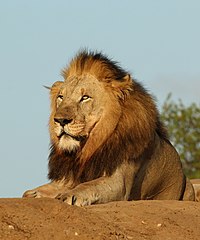Top 10 Dangerous Animal In The World
1. Mosquitoes: Mosquitoes are responsible for more human deaths each year than any other animal due to the diseases they transmit, including malaria, dengue fever, and Zika virus.
Mosquitoes are small flying insects that belong to the family Culicidae. They are found all over the world, and there are thousands of different species of mosquitoes. Mosquitoes are known for their itchy bites, which they use to feed on the blood of animals and humans.
Both male and female mosquitoes feed on plant nectar and other sources of sugar, but only the females require blood for the development of their eggs. When a mosquito bites, it injects saliva into the skin to prevent blood clotting, which is what causes the itchy reaction.
Mosquitoes are capable of transmitting diseases such as malaria, dengue fever, Zika virus, and West Nile virus, among others, through their bites. Controlling mosquito populations and preventing their bites can help reduce the spread of these diseases. Measures such as wearing protective clothing, using insect repellent, and eliminating standing water where mosquitoes breed can help prevent mosquito bites.
2.Bear:
A bear is a large carnivorous mammal belonging to the family Ursidae. They are found in various parts of the world, including North America, South America, Europe, and Asia. There are several different species of bears, including black bears, grizzly bears, polar bears, and brown bears.
Bears have a distinctive appearance, with a large body, short legs, and a snout-like nose. They are known for their thick fur, which helps to keep them warm in cold climates, and their sharp claws, which they use for digging and climbing.
Bears are generally omnivorous, meaning that they eat both plants and animals. Their diet can include berries, nuts, insects, fish, and small mammals. They are also known for their ability to hibernate during the winter months, during which time they will not eat or drink.
Bears are often associated with strength and ferocity, but they can also be gentle and playful creatures. They are an important part of many cultures and mythologies around the world.
3.Box Jellyfish: Found in the waters of Australia, the box jellyfish is one of the most venomous creatures on the planet and can cause death in just a few minutes.
The box jellyfish is a type of cnidarian that is known for its venomous sting. It is named for its cube-shaped bell, which is usually transparent or translucent, and can measure up to 30 centimeters (12 inches) in diameter. Box jellyfish are found primarily in the waters of the Pacific and Indian Oceans, particularly off the coast of Australia.
Box jellyfish have several long, slender tentacles that can reach up to 3 meters (10 feet) in length. These tentacles are covered with thousands of tiny, nematocyst-filled stinging cells called cnidocytes. The cnidocytes release venom when triggered by contact with a potential prey item or a perceived threat.
The venom of box jellyfish contains toxins that can cause a variety of symptoms in humans, ranging from mild pain and itching to cardiovascular collapse and death. Victims of box jellyfish stings should seek medical attention immediately, as prompt treatment can help to reduce the severity of symptoms and prevent complications.
To avoid being stung by a box jellyfish, it is important to be aware of their presence and to avoid swimming in areas where they are known to be common. Wearing protective clothing, such as wetsuits, can also help to reduce the risk of being stung.
4. African Elephant: While they are typically not aggressive towards humans, African elephants are responsible for more human deaths than any other large animal in Africa.
The African elephant is the largest land animal on Earth and is native to 37 African countries. There are two species of African elephants: the savanna (or bush) elephant and the forest elephant. The savanna elephant is the largest of the two species, with males weighing up to 6,000 kg (13,227 lbs) and standing up to 4 meters (13 feet) tall at the shoulder. The forest elephant is smaller, with males weighing up to 2,700 kg (5,952 lbs) and standing up to 2.5 meters (8 feet) tall at the shoulder.
African elephants are herbivores and can consume up to 300 kg (660 lbs) of vegetation in a single day. They are important seed dispersers and help to maintain the health and diversity of the ecosystems they inhabit. African elephants are also known for their social behavior and complex communication, which includes vocalizations, body language, and infrasonic calls that can be heard over long distances.
Unfortunately, African elephants are threatened by habitat loss and poaching for their ivory tusks. Conservation efforts are being made to protect them, including anti-poaching measures, habitat restoration, and community education programs.
5. Cape Buffalo: Known for their unpredictable behavior and fierce temperament, Cape buffalos are responsible for killing more hunters in Africa than any other large animal.
The Cape buffalo, also known as the African buffalo, is a large, powerful herbivore found throughout sub-Saharan Africa. They are one of the "big five" game animals and are known for their unpredictable and sometimes aggressive behavior.
Cape buffalo can grow up to 1.7 meters (5.5 feet) tall at the shoulder and weigh up to 900 kilograms (2000 pounds). They have dark, shaggy fur that is usually black or dark brown and large, curved horns that can grow up to a meter (3.3 feet) long.
Cape buffalo are grazers and feed on grasses, herbs, and shrubs. They are social animals and can be found in herds of up to several hundred individuals, although smaller groups of 20-30 are more common. Within a herd, there is a dominance hierarchy based on age, size, and strength.
Despite their docile appearance, Cape buffalo can be extremely dangerous if they feel threatened or cornered. They have a reputation for attacking and killing hunters, and are responsible for killing more big game hunters in Africa than any other animal. However, they are an important part of the African ecosystem and play a key role in maintaining the balance between predators and prey.
6. Hippopotamus: Despite their appearance as docile, slow-moving creatures, hippos are incredibly territorial and aggressive, and can easily kill humans with their powerful jaws and teeth.
The hippopotamus, also known as the "hippo," is a large, semi-aquatic mammal native to Africa. They are the third largest land mammal, after elephants and white rhinos. Hippos have a bulky, barrel-shaped body with short legs and a large head, which is supported by a thick neck. They can weigh up to 4,500 kg (9,900 lb) and measure up to 4 meters (13 feet) in length.
Hippos are herbivores and feed mostly on grasses, but they may also eat fruits and other vegetation. They are most active at night and spend most of the day in the water to stay cool and avoid the sun.
Hippos are known for their aggressive behavior and are considered one of the most dangerous animals in Africa. They can be very territorial and will defend their territory fiercely, both in the water and on land. Hippos can run up to 30 km/h (19 mph) on land and are excellent swimmers, able to hold their breath for up to 5 minutes underwater.
Hippos are social animals and live in groups of up to 30 individuals, led by a dominant male. Female hippos give birth to a single calf every two years, after a gestation period of 8 months. The calf will stay with its mother for up to 8 months before becoming independent.
Despite their reputation as dangerous animals, hippos play an important ecological role in their environment. They help to maintain the balance of aquatic ecosystems by grazing on vegetation and creating channels in the riverbeds. However, hippos are facing threats such as habitat loss and poaching, and their populations are declining in many parts of Africa.
7. Pufferfish: Some species of pufferfish contain a deadly neurotoxin that can kill humans if ingested in even small amounts.
Pufferfish, also known as blowfish, are a group of fish in the family Tetraodontidae, which are found in tropical and subtropical waters around the world. They are known for their unique ability to inflate themselves by swallowing water or air when threatened, making them appear much larger and more intimidating to predators.
Pufferfish are also known for their toxic flesh, which contains tetrodotoxin, a potent neurotoxin that can be lethal to humans if ingested. Despite their toxicity, pufferfish are considered a delicacy in some parts of the world, such as Japan, where specially trained chefs prepare the fish for consumption.
In addition to their distinctive appearance and toxic flesh, pufferfish are also notable for their complex behaviors and social interactions. Some species of pufferfish are known to create intricate and elaborate patterns in the sand on the ocean floor as part of their mating rituals, while others form cooperative relationships with other fish and even with other species, such as octopuses.
8. Cone Snail: Found in tropical waters around the world, the cone snail is a small but deadly creature that can inject a venomous harpoon-like tooth into its prey, including humans.
Cone snails are a group of predatory sea snails that belong to the family Conidae. They are known for their distinctive cone-shaped shells and their ability to produce venom that they use to capture their prey, which consists primarily of fish and other marine invertebrates.
Cone snails have a specialized structure called a radula, which is a ribbon-like tongue covered in tiny teeth that they use to harpoon their prey. Some species of cone snails also have venomous harpoons, which they use to inject their prey with toxins that quickly immobilize and kill them.
While cone snail venom can be deadly to their prey, it can also be extremely dangerous to humans. Some species of cone snails produce venom that can cause paralysis or even death in humans if they are stung. However, cone snail venom also contains many unique compounds that have potential medical applications, such as pain relief and the treatment of neurological disorders.
Overall, cone snails are fascinating and unique creatures that have captured the attention of scientists and nature enthusiasts alike.
9. Komodo Dragon: The largest living lizard, the Komodo dragon has a powerful bite that can easily kill humans and other animals, and its saliva is also venomous.
The Komodo dragon is a species of lizard that is native to the Indonesian islands of Komodo, Rinca, Flores, and Gili Motang. It is the largest living lizard species in the world, with adults reaching lengths of up to 10 feet (3 meters) and weighing up to 200 pounds (91 kilograms).
Komodo dragons are carnivorous and primarily hunt and scavenge for prey such as deer, pigs, and water buffalo. They are also known to eat smaller Komodo dragons, as well as birds, snakes, and other small animals.
These lizards have a venomous bite, which they use to weaken and kill their prey. However, their saliva also contains bacteria that can cause infections, making their bite potentially deadly to humans if left untreated.
Komodo dragons are classified as a vulnerable species by the International Union for Conservation of Nature (IUCN) due to habitat loss, poaching, and human-wildlife conflict. Conservation efforts are underway to protect and preserve their populations, including establishing protected areas and captive breeding programs.
10. Lion :












Comments
Post a Comment